Embracing Aging? Exploring Shifting Attitudes on Growing Older


Growing older can present a double-edged sword for many. On the one hand, a long and fruitful life is a universal aspiration. On the other hand, many cultures prize youth and devalue old age. But, with so many age-positive movements gaining momentum and social justice taking center stage, has the double-edged sword become more single-sided? We recently reached out to more than 1,000 people across the country to find out.
After examining the data from 1,016 people of all ages, it’s evident that the culture surrounding aging has changed drastically. Respondents shared their perceptions of everything from their favorite parts of growing up; their biggest fears; how time has impacted partnerships; and even their personal approaches to gray hair and makeup as they age. Continue reading to see how embracing aging truly occurs in modern America.
U.S. Life Span
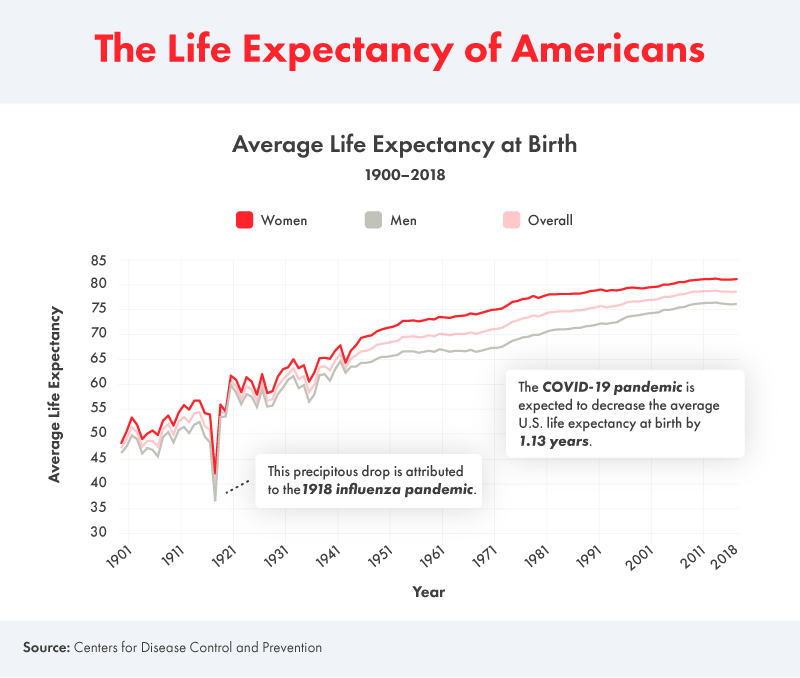
Before diving into what the respondents had to say, we wanted to quantify how old age has changed numerically in the country. We first looked at the Centers for Disease Control and Prevention’s (CDC) data on life expectancy from 1901 to 2018 – the most recent available year.
Though life expectancy shows a general upward trend over the years, modern times have thrown a curveball. Emerging research shows the recent COVID-19 pandemic has actually decreased American life expectancy by an average of 1.13 years. The impact of the 1918 influenza pandemic can be seen in the chart, as it’s when the largest dip in life expectancy occurred.
Without exception, every year in CDC data suggests women live longer than men, though the gap has widened and closed somewhat from year to year. Aging from a cultural perspective is also often very different for men and women – a concept our study digs into further based on respondent perspective. Regardless of gender, it’s important to take the precautions as outlined by the CDC in order to rectify or at least improve upon the dip in life expectancy that the pandemic has caused.
Overall Feelings About Aging
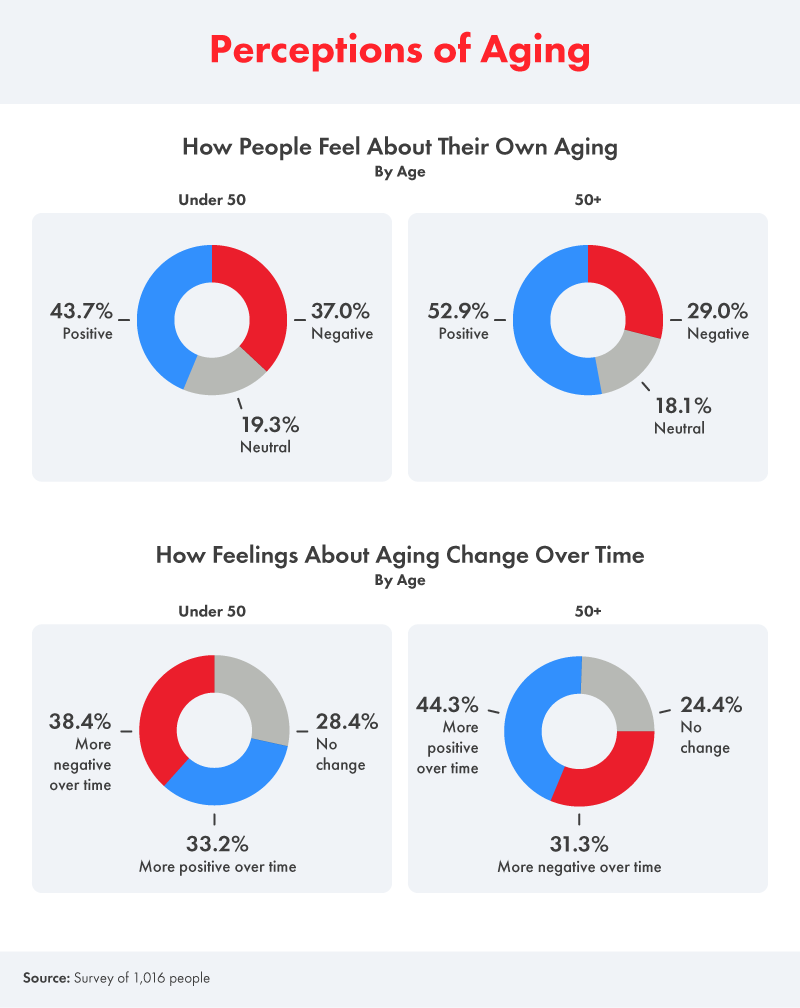
Moving away from CDC data into data from our respondents, our study next turns to how respondents feel about getting older. Their responses are separated by those who are under the age of 50 and those who are 50 years of age or older.
If you are afraid of getting older, our data suggests that aversion will actually decrease as you age. Respondents over 50 years of age were much more likely to feel positive about their own aging process than their younger counterparts. That said, even younger participants (or at least those under 50) were also more likely to feel positive than not in regards to getting older.
When we asked respondents to reflect on how their emotions surrounding aging had changed over time, there was more of a split in sentiment. A third of respondents under 50 said their feelings about aging became more positive with time, as did 44.3% of respondents aged 50 and above. The reasons for these differences may be based on some of the common misconceptions about aging, which we will dive into in the next portion of our study.
Starting to Grow Old
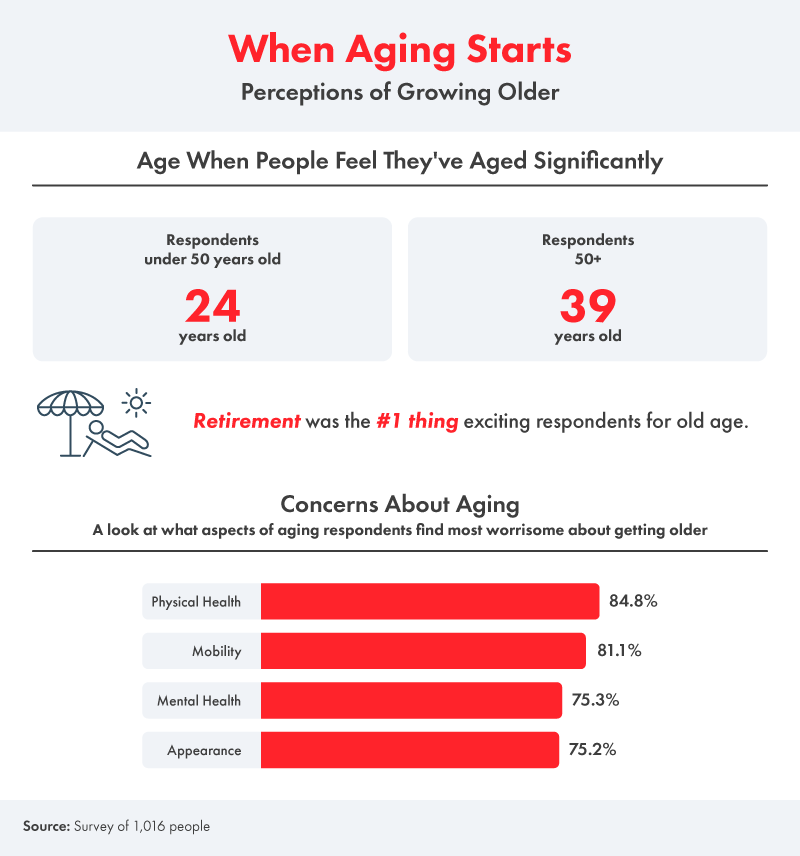
Unlike CDC data behind life expectancy, the age at which a person starts to feel “aged” isn’t an irrefutable fact but instead is more subjective or based on personal opinion. The next part of this study looks at the average age of respondents when they’d felt like they had aged significantly, as well as their specific worries about potentially growing older.
On average, people below the age of 50 said that the age of 24 made them feel (or will make them feel) that they had aged significantly. Twenty-two is often the time a person first leaves college and enters the “real world.” With that can come a lot of new experiences that can give the impression of aging a lot. Instead of being financially dependent or not having to work, this age likely involves a person having to leave the dorm room, provide for themselves, and essentially become an adult. These factors could’ve contributed to people under 50 reporting that 24 was when they first felt like they’d aged significantly.
Evidently, however, 24 starts to feel pretty young in hindsight: Respondents over the age of 50 agreed that 39 was the age they felt significantly aged. This may be more due to 40 being just around the corner, which perhaps doesn’t necessarily come with as many life changes as 24, but may simply sound older.
Whatever age respondents felt “aged,” most agreed that the state of their health was the most worrisome component of becoming older (84.8%). That said, appearance wasn’t far behind, with 75.2% of respondents agreeing that this was the most worrisome part of becoming older. In spite of progress against ageism, American culture still prizes youthful appearances and sets a beauty standard that works against older age groups, particularly for women.
Aging Physically
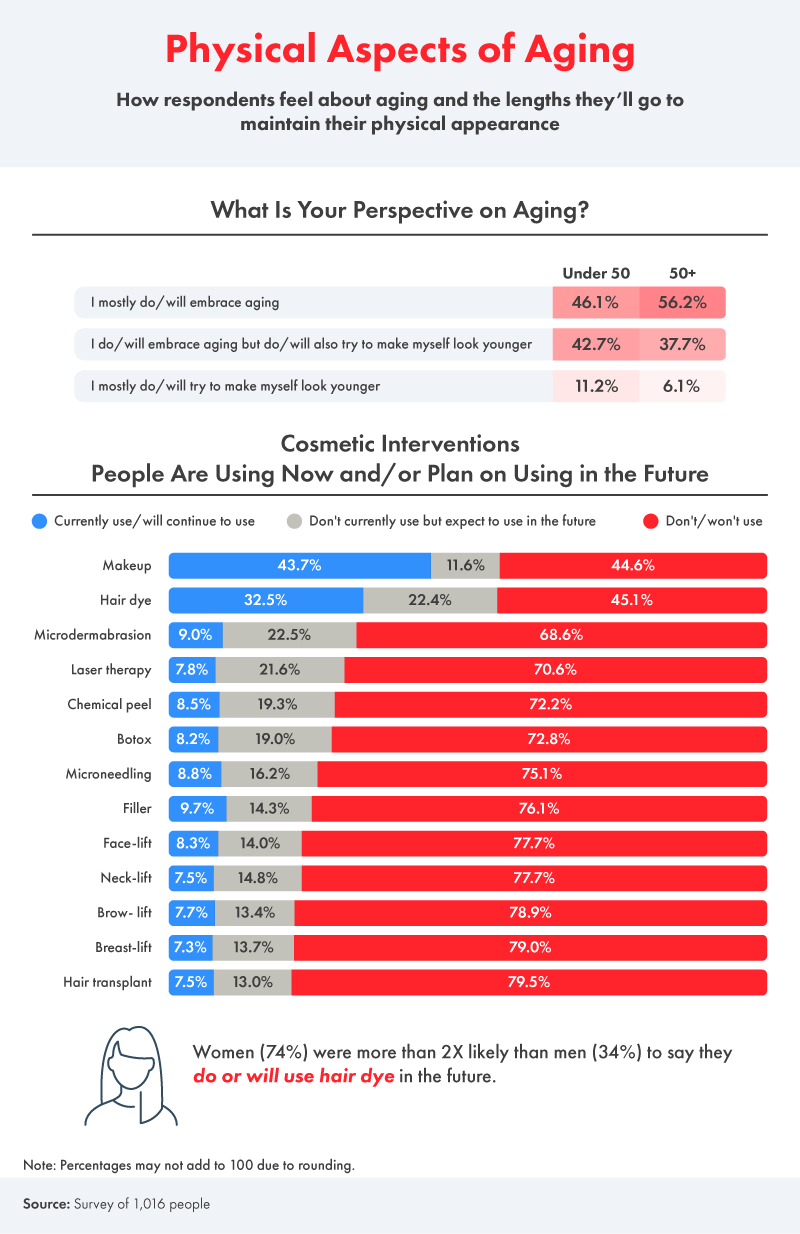
Our study next looks at the physical components of aging, or the way a physical appearance changes with age. Respondents shared about the approaches they have taken or plan to take with regards to physical appearance.
Though physical appearance may have given many respondents a reason to worry, it’s encouraging to know that many respondents 50 and older (56.2%) fully embraced aging. This age group was also much less likely to spend time trying to look younger. Moreover, it’s important to remember that even those in their youth also often feel highly insecure and perhaps unable to enjoy the beauty so often associated with youth. It appears that with age, respondents find the security necessary to embrace their looks, even if society prizes a youthful appearance above all else.
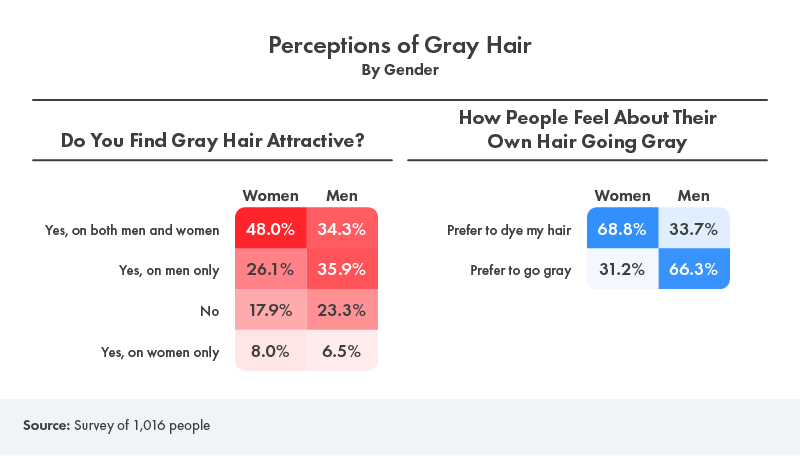
The majority of respondents also only planned to use makeup and hair dye either in the near or distant future. Things like plastic surgery and face fillers were significantly less commonly a part of the plan. That said, the burden of hair dye was much more likely to fall on women: Women were more than twice as likely as men to say they will dye their hair in the future. Men were also much more likely to think that gray hair was only attractive on a man. Perhaps the progress against ageism and impossible beauty standards will continue to make strides here. After all, the enormously popular trend of gray/silver hair still has a strong hold on youth culture.
Aging Mentally

Our study concludes with perhaps the most important aspect of aging: a person’s mental state. Respondents over 50 shared how they felt their mental health has changed with age, as well as the best and worst parts of aging mentally.
Though cognitive decline is typically associated with growing older, most respondents agreed that their mental health had either improved (26.7%) or not changed at all (54.5%) as they grew older. These improvements or lack of cognitive decline may have to do with what respondents called some of the best parts of aging. Things like feeling wise (36.7%), feeling more confident (26.3%), and having more time for passions (23.5%) can all contribute to a healthier mental state. More than half agreed that growing older also made them grow closer to their romantic partner.
As far as the worst parts of aging were concerned, decreased mobility took the cake. Aging affects muscle mass, strength, and bone density, all of which can contribute to diminished mobility, as respondents mentioned. This is a far worse price to pay than things like boredom, which respondents were much less likely to fear.
Aging Seamlessly
Growing up and growing older appears to be more of a privilege than ever, particularly as the COVID-19 pandemic has caused overall life expectancy in the U.S. to drop by the largest amount in decades (1.13 years). Thankfully, growing older is a blessing and a time in which many respondents found more confidence, more time for their passions, and even a growing bond with their loved ones. Though decreased mobility is a fair and common concern among older age groups, modern technology has provided us with workarounds.
Stannah Stairlifts provide a crucial piece of modern technology to help seniors deal with their loss of mobility. With Stannah Stairlifts, every senior or anyone struggling with mobile impairment can glide up the stairs seamlessly and safely. Stannah Stairlifts are fully customizable and can help you begin to enjoy your home again no matter your age. If you or a loved one could use a little more mobility in your life and in your home, head to Stannah-Stairlifts.com today to see how we can help.
Methodology
We surveyed 1,016 people about their perceptions of aging. Respondents were 48.2% men and 51.7% women. One respondent chose not to disclose their gender. The average age of respondents was 44.2 with a standard deviation of 14.4 years.
Respondents were asked how positively or negatively they felt about different aspects of aging. They were given the following scale of options:
- Very positive
- Somewhat positive
- Neutral
- Somewhat negative
- Very negative
In our final visualization of the data, we combined these options into three groups: positive, neutral, and negative.
Respondents were asked to report how worried they were about various aspects of aging. They were given the following scale of options:
- Not at all worried
- Somewhat worried
- Very worried
The percentages presented in the final visualization of the data represent the percentage of respondents who said they were somewhat or very worried about a particular aspect of aging.
Limitations
The data we are presenting rely on self-report. There are many issues with self-reported data. These issues include, but are not limited to, the following: selective memory, telescoping, attribution, and exaggeration.
Fair Use Statement
Aging doesn’t have to be a scary thing. If you know someone who would benefit from the information in this project, you may share for any noncommercial reuse. Please link back here so the entire project and its methodology can be viewed. This also gives credit to the contributors who make this work possible.

 USA
USA